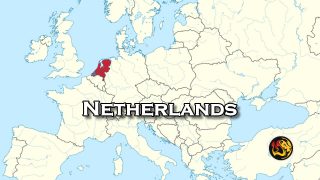Dutch King Opens Slavery Exhibition Showing Unhealed Wounds
By Stefan J. Bos, Chief International Correspondent Worthy News

(Worthy News) – Her powerful voice trembled as she carefully sang her song in Papiamentu’ Vlemayo.’ It narrates the horrific story of a mother incapable of protecting her newborn child against famine, drought, diseases, and other threats.
Antillian singer, composer, and lyricist Izaline Calister was singing at the opening of the Slavery-exhibition of the Rijksmuseum in Amsterdam. From her position on the first floor, she looked straight in the eyes of Dutch King Willem-Alexander, who opened the long-delayed exhibition. It comes at a time of soul searching in the Netherlands about its controversial colonial past.
For singer Izaline it’s visibly personal. Her great-great-grandmother was born a slave. As a result, she lost four of the six children that she had baptized.
Those tragedies also underscore the story of slavery at the exhibition told through the personal stories of 10 people. They range from enslaved workers to a wealthy Amsterdam woman painted by famed Dutch art painter Rembrandt.
“We wanted to make the case that this is a history that speaks to anybody in the Netherlands. It belongs to all of us, so that’s why we chose a personal approach,” said Valika Smeulders, head of the museum’s history department.
Among the stories is Wally, an enslaved man forced to work on a sugar plantation in the colony of Suriname. In an audio presentation, his history is recalled by former kickboxing world champion Remy Bonjasky, whose ancestors worked on the same plantation.
Wally became involved in a conflict with the managers of the plantation in 1707. As a result, he and other enslaved people fled before recapturing, interrogated, and executed. “Their severed heads would later be displayed on spikes as a warning,” Bonjasky explained.
Another story in the exhibition that provides a glaring contrast to the horror of the slave’s short life is Oopjen Coppit, the widow of Marten Soolmans. His father owned Amsterdam’s largest sugar refinery. The refinery was processing crops harvested by enslaved men and women in South America.
In the exhibition, Coppit represents the wealth generated for a privileged few by enslaved workers. In a full-length portrait painted in 1664 by Rembrandt van Rijn, she wears a long black, lace-trimmed dress accessorized with a pearl necklace and earrings. “That we’re able to use Rembrandt to speak about the history of slavery is really exciting and really new,” Smeulders said.
Oopjen’s second husband, Maerten Daey, also had links to the slave trade. Before their wedding, he served as a soldier with the Dutch West India Company in Brazil. According to church records cited in the exhibition, he kidnapped and raped an African woman called Francisca, fathering a daughter in 1632.
“The lives of Marten, Oopjen, and Maerten are intertwined with the history of slavery,” Rijksmuseum Director Taco Dibbits said in an audio tour of the exhibition. “They owed their wealth to the slave labor in Brazil. It is an example of how the history of slavery and the history of the Netherlands are bound together.”
For most people, the exhibition can be viewed only online due to ongoing coronavirus restrictions, but organizers hope to open up for a larger public this summer slowly.
Amsterdam played a significant role in the slave trade, and Dutch merchants made fortunes from it. The museum displays a thin iron rod with the artistically painstakingly interwoven letters GWC — used to brand the initials of a Dutch trading company into the skin of enslaved workers.
Nearby a substantial wooden set of stocks and heavy iron chains and locks were used to constrain enslaved people. And there is a small box decorated with gold, tortoiseshell, and velvet, celebrating some of the valuable commodities traded by the Dutch West India Company in the 18th century: Gold, ivory, and human beings.
The Netherlands might be a small country today. But it was a significant player during colonialism. Historians estimate that Dutch traders shipped more than 600,000 Africans to the Americas and many more around the Indian Ocean. The Dutch slave trade endured from Brazil to the Dutch East Indies, now known as Indonesia.
This exhibition is part of a broader movement in Europe to re-examine colonial histories. For example, in neighboring Belgium, the Africa Museum near Brussels re-opened a few years ago after a significant renovation showing the country’s controversial history in Congo.
And Germany is returning hundreds of artifacts known as the Benin Bronzes that were mostly looted from West Africa by a British colonial expedition.
The Black Lives Matter protests that began last year after killing Black man George Floyd by US police added to the soul searching in the Netherlands. Increasingly, vocal Dutch people questioned their past in a nation where the famed mansions near the canals of Amsterdam, the capital, were built during the slave-trade era.
Last year King Willem-Alexander apologized for the “excessive violence” of Dutch colonialists in Indonesia. And the municipality of Amsterdam is also preparing to apologize after a slavery monument was already unveiled here.
However, polls suggest that while most Dutch people are horrified by the slavery of their colonial past, more than half do not want an official apology.
The divisions led to tensions on the streets, including around a sculpture of Jan Pieterszoon Coen, a key official in the Dutch East India Company considered a national hero for colonizing what is now Indonesia.
It stands in the port town of Hoorn, one of the main bases of the Dutch East India Company, whose domination of the spice trade effectively funded the Golden Age of the 16th and 17th centuries, backed by Dutch maritime supremacy at the time.
Traditionalists, like populist eurosceptic leader Thierry Baudet, have laid flowers at the foot of the statue to show support after several statues of historical figures were damaged in the Netherlands.
But opponents would rather throw it into the North Sea, condemning it to the same fate as others worldwide after the death of unarmed black man Floyd in police custody in the United States.
For now, the debate on how to deal with Dutch slavery seems far from over.
💡 Did you know? One of the best ways you can support Worthy News is by simply leaving a comment and sharing this article.
📢 Social media algorithms push content further when there’s more engagement — so every 👍 like, 💬 comment, and 🔄 share helps more people discover the truth. 🙌
Latest Worthy News
If you are interested in articles produced by Worthy News, please check out our FREE sydication service available to churches or online Christian ministries. To find out more, visit Worthy Plugins.
